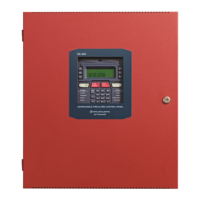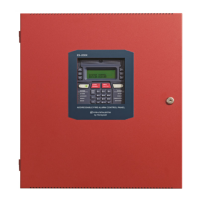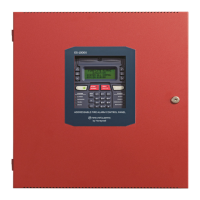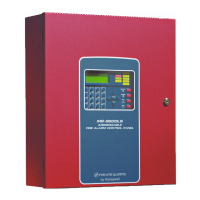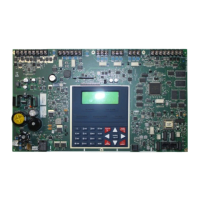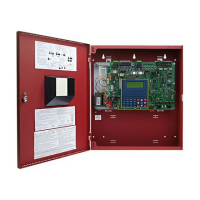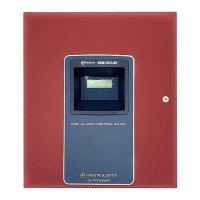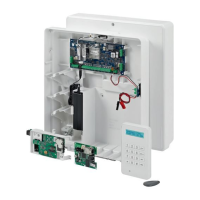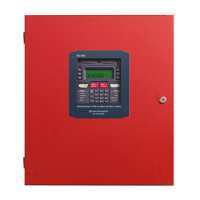
Do you have a question about the Honeywell Fire-Lite Alarms ES-50X and is the answer not in the manual?
| Brand | Honeywell |
|---|---|
| Model | Fire-Lite Alarms ES-50X |
| Category | Control Panel |
| Language | English |
Details on IP, Cellular, and Telephone line signaling methods and their limitations.
Key safety notes regarding detector placement and system response.
Warnings and guidance for safe power connection and wiring practices.
FCC and Canadian regulatory compliance requirements and warnings.
Information on obtaining the latest software versions for the system.
Instructions for providing feedback on the user manual and documentation.
Lists key features and available options for the ES-50X control panel.
Details technical specifications including power, circuits, and dimensions.
Describes panel controls, keys, LCD display, and LED indicators.
Lists and describes the main system components and modules.
Details available optional modules for expanded system functionality.
Lists available accessories for the ES-50X system.
Lists relevant National Fire Protection Association (NFPA) codes.
Lists relevant Underwriters Laboratories (UL) standards and documents.
Lists related Fire-Lite product documentation and manuals.
Provides step-by-step instructions for mounting the FACP backbox.
Details the procedure for connecting AC power and establishing earth ground.
Instructions for connecting the system's battery power source.
Wiring diagram and requirements for Class B Notification Appliance Circuits.
Wiring diagram and requirements for Class A Notification Appliance Circuits.
Installation guide for the optional GSM communicator card.
Instructions for installing the 4XTMF transmitter module.
Guidance on calculating maximum wiring distances for ANN-BUS devices.
Overview of methods for site-specific system programming.
Procedures for setting up user accounts and managing passwords.
Accessing and navigating the master programming interface.
Automating the detection and setup of addressable devices on the SLC loop.
Managing addressable devices: adding, deleting, or editing points.
Configuring system zones for event reporting and device assignment.
Configuring various system-wide features and parameters.
Accessing and managing the system's event history log.
Configuring the central station communicator settings.
Programming and configuring ANN-BUS annunciator modules.
Procedures for changing system passwords.
Instructions for clearing system programming data.
Checking for programmed zones without input or output correlations.
Describes the function of each control button on the FACP panel.
Describes the meaning and behavior of each panel LED indicator.
System status and functions during normal, non-alarm conditions.
System behavior and display messages during trouble conditions.
System behavior, display, and actions during alarm conditions.
System behavior and display for Carbon Monoxide alarm events.
System behavior and display for supervisory conditions.
Details on detector maintenance alerts and testing.
Operation of synchronized Notification Appliance Circuits.
Operation of the presignal feature for delayed alarm notification.
Operation of the Positive Alarm Sequence (PAS) feature.
Configuration of special system timers for various delays.
Procedures for performing system walktests.
Viewing the status of individual system points (detectors/modules).
Viewing the status of programmed system zones.
Viewing POTS line configuration details.
Viewing IP network configuration details.
Defines the priority order for transmitting events to central stations.
Procedures for using FS-Tools for panel programming and data transfer.
Instructions for transferring data to and from the FACP using a USB drive.
Steps for upgrading the FACP's embedded software.
Guidance on calculating the required AC branch circuit capacity.
Methodology for calculating total system current load under various conditions.
Determining the required battery capacity based on system load and NFPA requirements.
Explains how input devices and zones are correlated via software.
Key NFPA 72 requirements for fire alarm systems.
Requirements for proprietary protective signaling systems.
Specific wiring requirements and distance limitations for NAC circuits.
Operation of control modules for HVAC shutdown functionality.
Operation of monitor modules for HVAC restart and override.
Describes the transmission string format for Ademco Contact ID.
Mapping of detector addresses to Central Station report numbers.
Mapping of module addresses to Central Station report numbers.
Lists earth fault resistance detection trip values for FACP terminals.
Diagram showing minimum ANN-LED configuration for Canadian use.
Immediate actions required when audible devices sound for an alarm.
Steps to safely return the system to normal operation after an alarm.
System behavior and indicators during AC power loss or brownouts.
Procedures for manual activation of functions like fire drills.
How to silence audible alarm devices and the implications.

